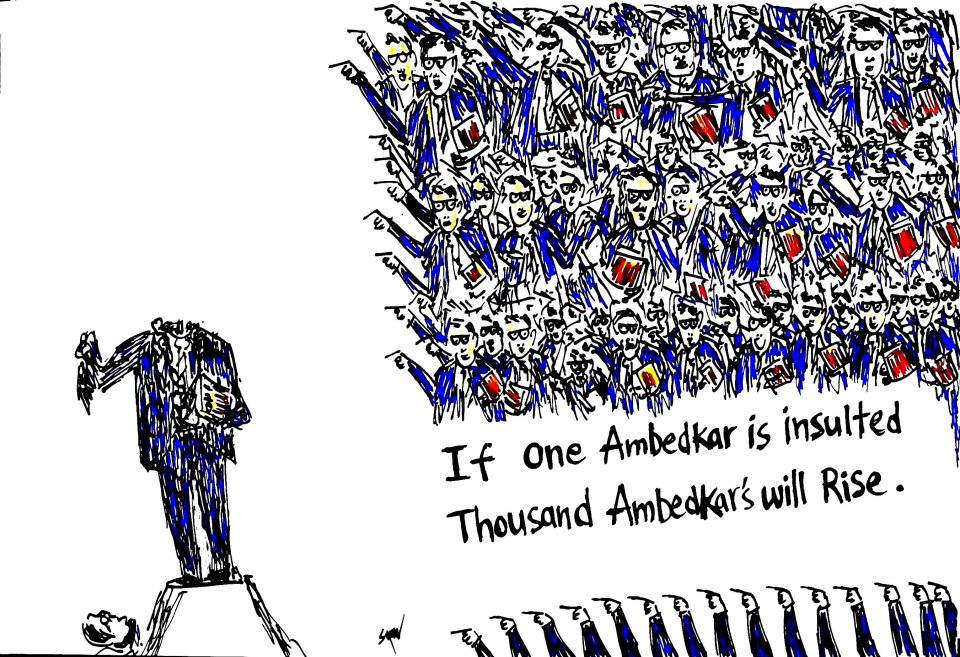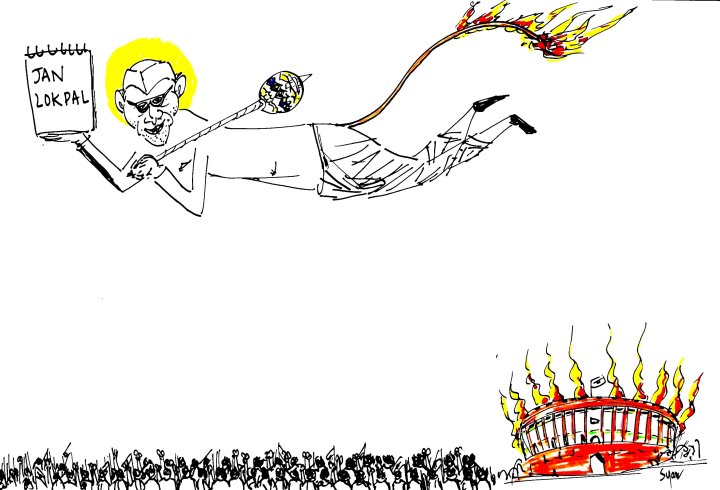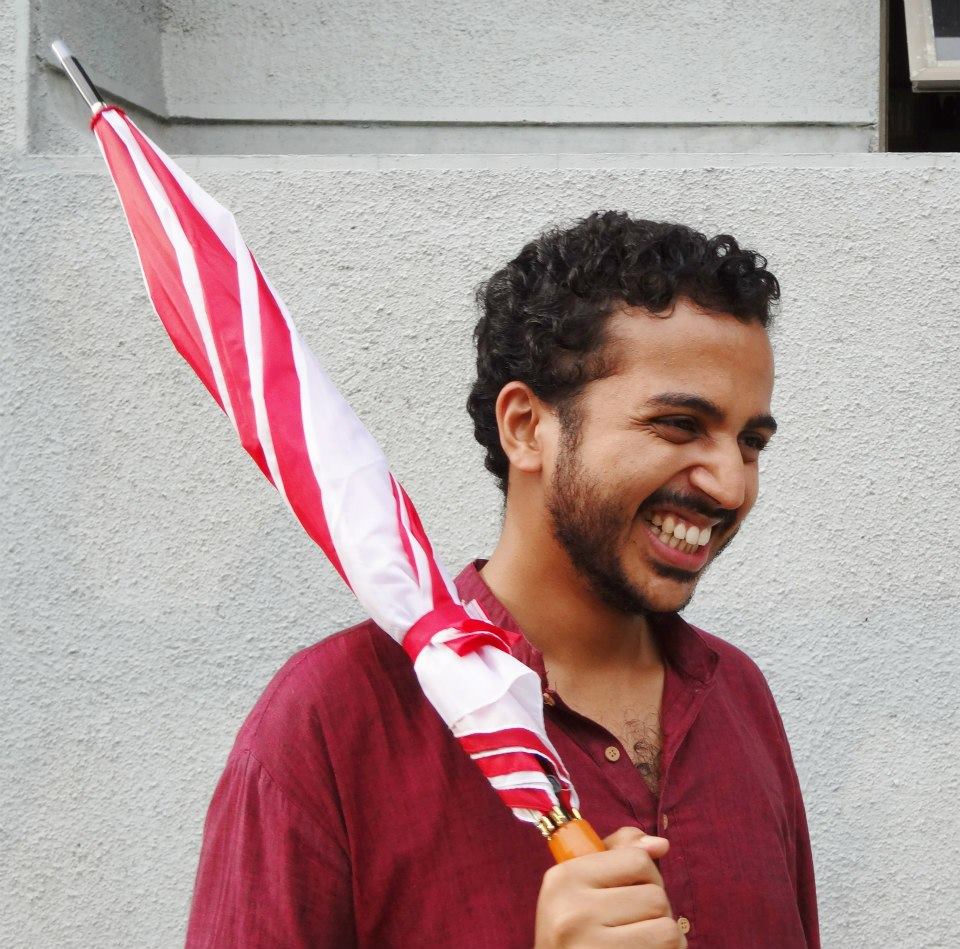Raj Kumar
Ever since the change of government in Uttar Pradesh in the month of March 2012, the state is witnessing very bizarre, obscurantist and lamentable politics and some of the decisions of new government are profoundly baffling to democratic civilized society. The people of Uttar Pradesh voted Samajwadi Party (SP) to power with absolute majority, but by now, they must have started realizing the Frankenstein they have created, if one analyzes the retrograde decisions taken by Akhilesh Yadav government devaluing social diversity and inclusive growth. A change of government is supposed to bring exuberance to the state apparatus and extricate the masses from the lethargy and banality of the outgoing government. But the new government in the name of change is apparently involved in the most backward looking misadventures. Specially its decision to scrap girl child education incentive scheme is most perplexing and smacks of its feudalistic orientations. Constitution envisages justice to all and makes special provisions to the deprived sections to make India a truly egalitarian and sane society. The goodwill of illiterate, poor and half starved masses towards constitution is the testimony of the constitutional commitment it has with the neediest.

The new government in Uttar Pradesh with socialist pretentions has demonstrated unprecedented audacity and misanthropy in discontinuing schemes benefiting girls’ and Dalits’ education, the priority areas for almost all state and central governments, past or present. One of the schemes scrapped by the government is Savitri Bai Phule Balika Shiksha Madad Yojna. This scheme provides financial assistance of Rupees 25,000 to every girl student of below poverty line families. A student who enrolls herself into 11th standard is provided 15,000 Rupees and a cycle, and another installment of Rupees 10,000 is given when she takes admission in 12th standard. It was one of the most progressive and girl child education enhancing steps of the previous Mayawati government. In a state with the greatest numbers of illiterates, women illiterates, atrocities on women, if carried forward the scheme had the potential to improve the sex ratio as well as overall women’s empowerment in the state. But the present government thought it otherwise and scrapped it. In the last three years, during 2009-11, 6, 86,953 girls have benefited from this scheme. Those who cleared their 10th standard exams in 2012 are now denied this benefit. This step is detrimental to girls’ education and specially education of girls belonging to economically poor families. This scheme was available to each and every section of the society irrespective of caste or community and was dedicated to one of the pioneers of modern education in India. Savitri Bai Phule was the first lady teacher of India who started a school for girls of all castes and communities including untouchables in 1848 in Maharashtra. Interestingly, Savitri Bai Phule belongs to one of the backward castes, and scrapping of the girl education incentive scheme defies all logic of statesmanship. A state despairingly nefarious for its feudalistic and caste patriarchal obscurantism can ill afford such an approach. Just because the scheme was started by the last government, the new incumbent has no moral authority to dismantle the programme. Every right thinking citizen and specially the poor voters must hang their heads in shame for having brought such a political outfit which is socially incorrect and morally paralytic, to the centre stage.

Another scheme that was scrapped is the Mahamaya Balika Madad Yojna. This scheme was started by the BSP government and guaranteed Rupees 1, 00,000 for every girl child from BPL families at the age of eighteen years. In a society where dowry is one of the biggest killers and parents of a young girl curse themselves perpetually when arranging their daughter’s marriage, it was a great relief for the family. But the new government has stopped this scheme also. The number of farmers committing suicide in the countryside is increasing and the studies have shown that one of the major reasons for farmers’ indebtedness is loans taken for daughters’ marriages. This scheme could have made some meaningful contribution in reducing the family stress. So far the number of girls registered for the benefit is approximately 3, 25,000. But whether even these girls will be given the amount is uncertain now. The new registration has already stopped. A family sure of receiving this financial assistance could have given priority for girl’s education and it would have boosted the otherwise fragile position of women. Another bright point of the scheme was that the girl will remain eligible if she is unmarried at the age of eighteen years and those married before that age will forfeit their claim for the financial grant. This should have directly dissuaded child marriages in a state which is responsible for one of the highest maternal and child malnutrition rates in the country. Without assigning any reason, the government took the decision to stop this scheme. There can be no justification for the government’s move. This seems to be another case of inordinate haste in reversing the previous government’s decisions without proper application of constitutional and political propriety.
With globalization, privatization and liberalization, higher education in India is fast becoming out of reach for the common masses. Technical and professional courses in the country are distant dreams for even middle class Indians because each course requires lakhs of rupees annually. Quality education at affordable expenses is the ever cherished dream of aspiring parents and the historically excluded groups of the Dalits need special attention in this regard. One of the most laudable steps of the previous BSP government was the formation of Gautama Buddha University in Gautama Buddha Nagar. The university is a modern marvel of architecture and can be the envy of best of the university campuses in the world for its world class infrastructure and an especially dedicated ‘School for Buddhist Studies and Civilization’. One of the many unique features of the university was its financial assistance to GBU students to study abroad. Under the scheme half of the scheduled caste students were selected to complete one semester in famous European universities. Three batches had already benefited from the programme and the USP of the program was that for the first time in the country, the scheduled caste students were sent to foreign universities on state expenditure. Studying abroad is a dream for every student in the country. But only affluent sections can afford to send their wards abroad for higher studies, given the huge logistic costs involved. The initiative to send Dalit students for international exposure by the Gautama Buddha University was exemplary for other states and central governments. But this scheme has also been discontinued. Foreign education had a played an important role in the evolution of Ambedkar, and therefore in the Dalit liberation movement, and he had advised Dalits to send their children abroad for higher education as Indian universities are dominated by caste elements who do not allow the potential of Dalit students to flourish substantially. It is a great loss that the cause of quality Dalit education has suffered at the hands of the SP government.
Why is a government headed by a young backward caste technocrat involved in such a peremptory and hyper insensitive politics of blocking educational avenues to the most deprived sections of the society? Is it simple politics of vendetta against a political party’s programme or are there deeper issues involved in it? Caste Hindu beneficiaries are ferociously perpetuating an ideological canard that the dominant Shudra (OBCs) are the real oppressors of the Dalits as most of the atrocities are committed by the feudal elements of OBCs on the Dalits in rural India. It may be an empirical fact and actual position but in no way demonstrates the reality necessarily. Violence in a vertical society is always designed to be executed by the immediate neighbors who in the present case are the OBCs who live in close physical proximity to the SCs. A commander hardly comes to the field as foot soldiers are entrusted to attack the enemies. The dominant shudras are just lowest rank recruits or lathaits of the brahmanical high command and must not be taken for real oppressors. They are simply following the command of their caste superiors. This has been the poverty of backward class political ascendency. Without being part of the social transformation movement initiated by Jotiba Phule and carried forward by the likes of Shahuji Maharaj, EVS Ramaswami Nayakar Periyar, Narayana Guru and Dr. Ambedkar, many powerful Shudra communities have started enjoying the fruits of equalitarian constitution and democratic politics. Some of these groups have tendency and temerity to get recognized by the caste Hindu clergy and in their enthusiasm to prove their adherence to caste dharma as shown by the Rama in the case of Shambuka, commit horrendous caste oppression. At the time of implementation of Mandal commission report many OBCs, innocently targeted Dalits as beneficiaries of proposed reservations. The scrapping of schemes in the name of OBCs’ social revolutionaries by the backward class leadership in Uttar Pradesh is ill-informed and is being carried out at the behest of their socio-cultural brahmanical mentors. The Samajwadi Party is bound to realize the folly of its unscrupulous political debauchery for targeting those social revolutionaries who sacrificed their lives to extricate Shudras from the brahmanical yoke i.e Gautama Buddha, Savitri Bai Phule and Dr. Ambedkar etc. The design to create divisions and hostility between the SCs and OBCs is destined to be doomed and the brahmanics will suffer irreparable psychological and ideological loss due to the sagacity and pertinacity of Dalit empowering and enlightening élan.
Uttar Pradesh is a hotbed of casteism and, interestingly, around 40% of India’s Brahmins are situated in Uttar Pradesh alone. As a block, caste Hindus constitute 25% of the total state population which is the highest concentration in India. As votaries of caste hatred and multifold oppressive institutions, the brahmanics have maximum stakes in Uttar Pradesh. Dalits have strategically identified Uttar Pradesh as the neck of Brahmanism with the conviction that if Brahmanism is vivisected in UP, it will have a cascading effect in the whole country. The politics of Uttar Pradesh for the last two decades have changed for good and Dalits have studiously gained centre stage relinquishing their old age diffidence and dependency. Dalits have been fast assuming the role of harbingers of change and social transformation discarding caste institutions and related manifestations, acting as pivots for asserting caste victims’ rights, often initiating consolidation and providing enlightened leadership. This is opposed to old stereotypes of Dalits and poses real and substantial challenges to brahmanical hegemony. The functioning of BSP government has seemingly facilitated this powerful Dalit assertion and made devastating impact on the collective psyche of the brahmanics. For the first time in known history the caste elite have felt the heat and hence made a last ditch effort to save their skin. The collective onslaught by the brahmanics against previous government was testimony to their desperate last minute maneuvering and the political defeat of Dalits was staged. The policy reversals are nothing but the victory songs of the brahmanics, albeit in the guise of backward class leadership. But this is nothing more than a swan song and the last rites of dying Brahmanism. These are the last flickers of a dying flame and there will be absolute darkness thereafter. Afraid of playing face to face lest they become target of Dalit onslaught, the caste opponents are using the old technique of pushing their agenda through the dominant Shudra caste apparatus. But it’s 21st century and they are confronted with indomitable Dalits who are determined to make decisive and definite mark on history as dynamic, versatile, democratic and enlightened citizens with required stamina and strategy.
The detrimental decisions bring Uttar Pradesh to the crossroads and there is a possibility of the present dispensation falling into the brahmanical trap of accommodating and adulterating the backward classes’ consolidation which must work for annihilation of caste. The politics of co-option and corruption facilitated by the process of Sanskritization has obliterated almost every Shudra revolt against Brahmanism and they have shamelessly ended up as upholders of Varna dharma enjoying the lowest socio-cultural status. This is the great survival strategy which Dalit movement is successfully challenging and has come forward with the Bahujan consolidation paradigm. A great number of the Bahujan icons come from the Shudra communities and Dalits have ideologically and organically endeavored hard to surmount the internal inhibitions and form a strategic alliance of all oppressed communities. This politics of common victimhood by the vast majority haunts and frightens their erstwhile tormentors and they come up with new devices every time to break this consolidation. The current spree of anti Dalit steps by the Yadav government is reflective of this syndrome.
The dampening silence and darkening invisibility of the conscience keepers is conspicuously mysterious concerning the Uttar Pradesh political developments. Where are the Congressian, liberal, progressive, de-caste intellectuals or academia and social activists hiding themselves? Maybe they are busy in devising ways and means to win over Dalits, prescribing the same to Rahul Gandhis. Probably, they are waiting for Dalits to take lead and then they will follow Dalits; if that is the case, it will be of spectacular social significance and historically rare development. No one will argue that they come only for the leadership; in this case they will prove themselves as ardent followers. Dalits are still living in huts and it’s not that they cannot afford their one day, nay night meal; Dalits are waiting for political picnics. One can understand it’s too hot, may be in spring; before 2014 elections, you will come again. Dalits will continue to struggle on their own and will succeed in winning over their self respect and dignity. Attempting to create hurdles before the ongoing march of the Dalits in their pursuit of social transformation and economic emancipation is bound to invite their wrath and it would engulf all those institutions and individuals who are hell bent upon demonstrating their retrograde, degenerated propensities. UP government’s move to relegate and denigrate social revolutionaries is scurrilous to the democratic and egalitarian ethos and is bound to be registered as grave historical undoing in the memory of the masses.
Raj Kumar is Associate Professor, Political Science, Dyal Singh College, Delhi University.
Cartoon by Unnamati Syama Sundar.
Image courtesy of Internet.










